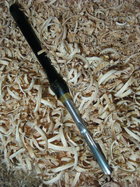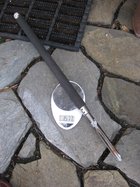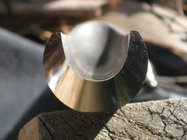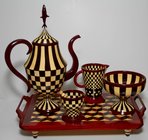Marc,
When you talk about sharpening do you mean taking them to the grinding wheel for every sharpening? My concept of sharpening is fine grit grinding to establish basic edge profile then hone to final edge. Repeat sharpenings would be hone only up to a point where grinding might be necessary again. Odie may be the only turner I'm aware of using that method.
If I was conspiracy theorist I might be tempted to suggest the CBN wheel and grinding jig people are the ones promoting all this grinding.
I’m not at all thrifty with my gouges, am sure I remove a bit more steel than needed.
Last evening, spurred on by your question, I took some measurements of my gouge, the one I use for 90% of my work. A 40/40 Wolverine grind. Second bevel is 30 degrees, third bevel is 18 degrees, and cutting bevel is 40.
For shaping, on the coarse wheel, 80 grit cbn, I grind the secondary bevel right up to the edge and make any corrections to the shape. Then grind the third (tertiary) bevel at 18 degrees. Then I sharpen, at 40 degrees for my cutting bevel.
For sharpening, only the first bevel, is sharpened on a 180 wheel, also cbn.
On a freshly shaped gouge the cutting bevel is .040” wide. I resharpen till the bevel gets to about .25 wide, then reshape.
The 180 grit cbn is a bit coarse for sharpening, I know. It takes a very light touch in such a thin bevel. I sharpen till I get a thin burr across the entire edge. I think I get about 6 sharpenings before cutting back the 2nd and 3rd bevels.
I‘ve observed, and maybe I’m the last one to notice, that edge wear happens on both sides of the bevel. That metal is removed from the flute side, the one we don’t sharpen. It does get rounded. So, it’s possible then that when sharpening, especially when honing, that the included angle is greater than you think. Could be + 10 or 15 degrees. The issue doesn’t exist for scews or kitchen knives where both sides of the bevel are sharpened. The only reasonable solution to me, is to take off more material than necessary to true up just the outside. It‘s necessary to shorten the flute a bit, the only way to get it back to true.
Marc




